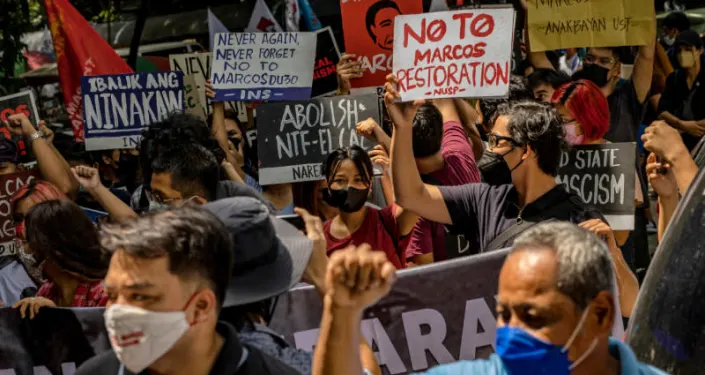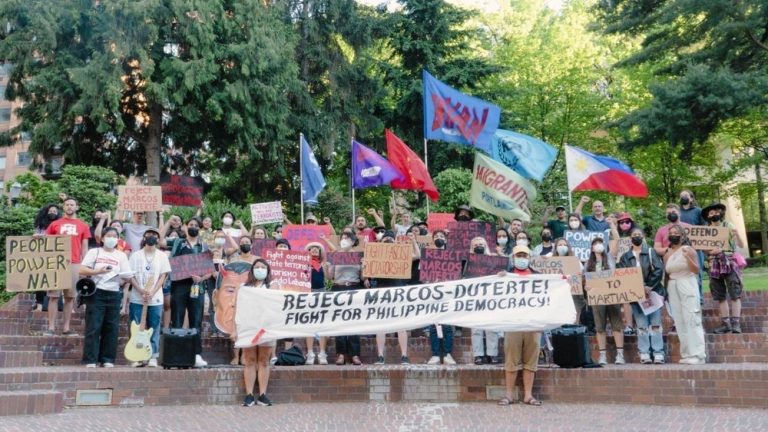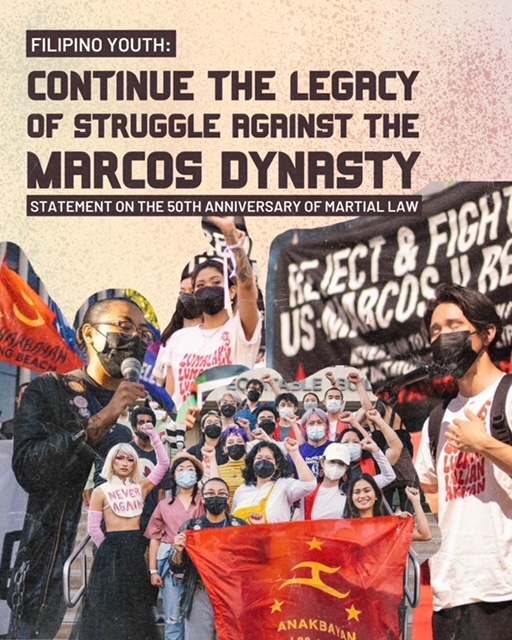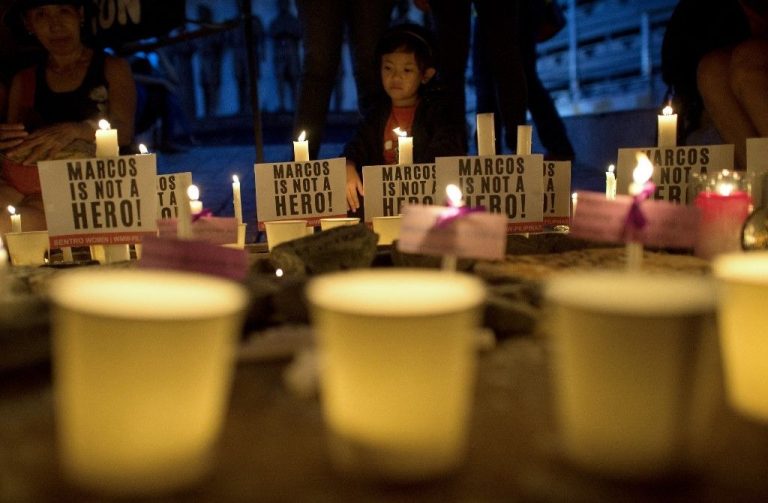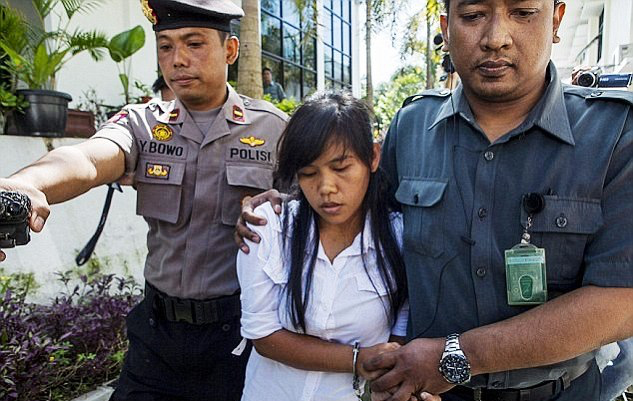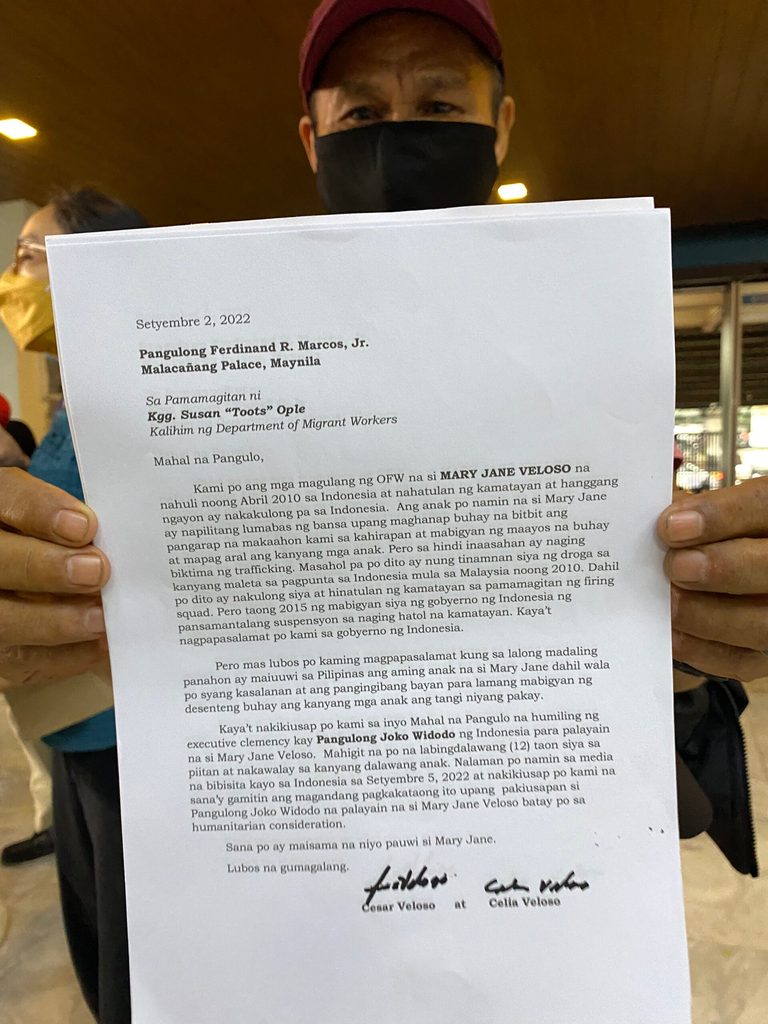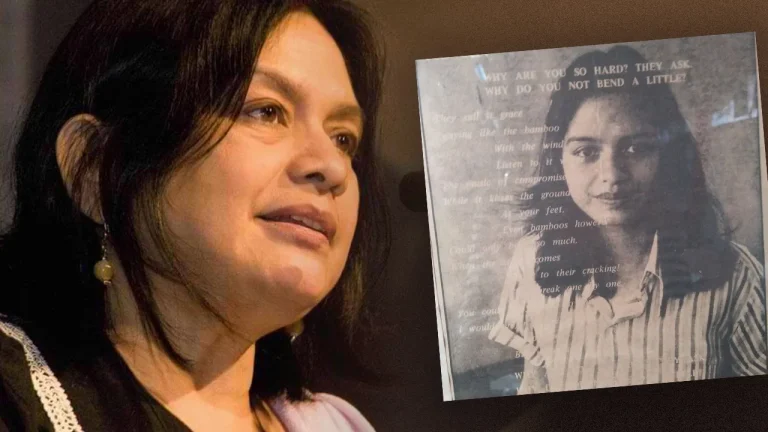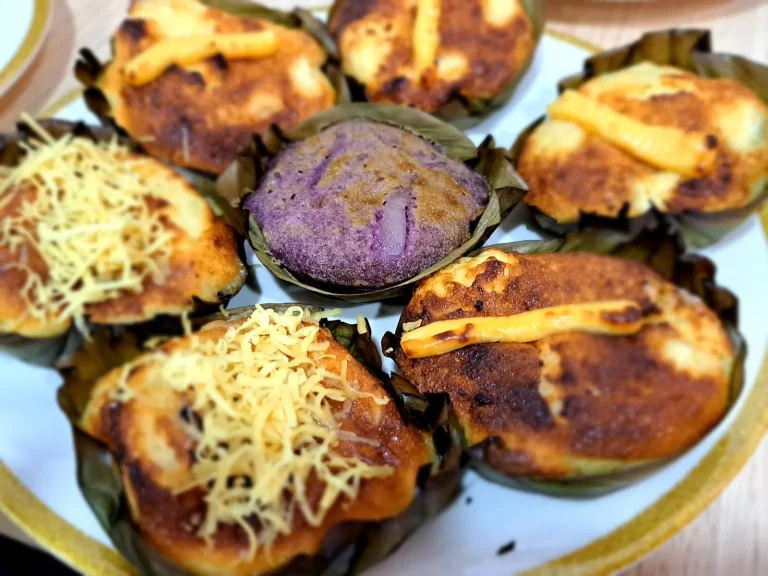Rohan Zhou-Lee
Tue, September 20, 2022 , Yahoo News
Filipino activists will rally both outside the United Nations headquarters and nationwide on Sept. 20 while the Philippines’ current president, Ferdinand “Bongbong” Marcos Jr., delivers a speech. The rally is meant to demand accountability from Marcos and the Philippines’ former President Rodrigo Duterte, whose drug war policy allegedly led to some 30,000 extrajudicial killings and whose daughter, Sara Duterte, is now the Philippines’ vice president. Led by national Filipino human rights organizations such as Malaya Movement, and Anakbayan, among others, the upcoming rally is also meant to demand that the West uphold and honor human rights worldwide.
Many Filipinos will mark the day after the president’s speech as the 50th anniversary of the declaration of martial law under Ferdinand Marcos Sr., whom many would call a dictator while others consider him a president. Believing that there was a communist insurgency threat, Marcos enacted martial law on Sept. 21, 1972, until his ousting in 1986 due to the People Power Revolution.
According to Joy Sales, assistant professor of Asian American Studies at California State University, Los Angeles, 70,000 Filipinos were imprisoned while “34,000 were tortured, and approximately 3,200 were killed under Marcos Sr.” Sales shared that she was “heartbroken” for the victims of martial law, saying, “I was frustrated that the activists who fought against dictatorship are seeing the return of the Marcoses to Malacañang [the Filipino presidential palace.]”
Now, with Marcos Jr. as president, many fear the return of martial law to the Philippines. “It’s not fear but the anger of, you know, is it coming back again? All these abuses, all these things that happened during martial law?,” said nurse Sockie Laya Smith at a recent panel with the transnational feminist organization AFI3RM. She recalled having to leave school and go underground to avoid being arrested for organizing as a student during martial law. “Even I had a lot of experiences where I was almost arrested, or almost my whole collective was gunned down. … In the countryside, [it] was worse. Villages were being burned.”
The Marcos family has been widely accused of plundering Filipino citizens, with 2003 court documents claiming $356 million as “ill-gotten wealth,” which is now estimated to be as high as $658 million with interest. However, major news outlets like Bloomberg estimate the family’s fortune to be around $10 billion. “The District Court of Hawaii ordered the Marcos family to pay $2 billion of reparations to the victims of the martial law imposed by Marcus Sr,” said Sales. “And in 2011, Imelda Marcos [his wife] and Marcos Jr. were fined $353 million by the court for failing to provide information on assets in connection to the aforementioned human rights class action suit.” It wasn’t until 2013 that the Philippine government was able to restore some $224 million seized from frozen Swiss bank accounts that Marcos kept.
With this deep history, many outside the Filipino community might wonder just how the son of an alleged dictator came to power. Some activists would compare this to the election of Donald Trump by citing misinformation spread during the campaign. Journalists were barred from reporting, and social media strategies were employed to create a social profile of the Marcos family without the violent history. Furthermore, Bongbong allegedly employed Cambridge Analytica — which also influenced the 2016 U.S. elections — to “rebrand” their image, something activists specifically decry in organizing campaigns to tell the truth.
Meanwhile, others root the election results in the systemic erasure of history. The Critical Filipina/x/o Studies Collective claimed “control over public education and the silencing of political dissent of educators and students by successive Philippine administrations” in a statement on May 17. Shortly before Marcos was inaugurated, the Securities and Exchange Commission ordered progressive news outlet Rappler, whose reports clashed with the Marcos campaign, to shut down. Rappler’s founder, Maria Ressa, was awarded the Nobel Peace Prize for her work in journalism to “safeguard freedom of expression.” Walden Bello, an activist who ran for vice president against Sara Duterte, was arrested after this year’s elections under cyberlibel claims from a former Davao City employee.
Connecting the Filipino struggle to others
When asked about why non-Filipinos should care, rally leaders point to similar treatment between Indigenous people of both “Turtle Island” in the U.S. and the Philippines. “They deployed U.S. teachers to [the Philippines] to ‘civilize’ these Native people,” Chris of Malaya New Jersey said while describing the Thomasite schools built during the U.S. colonization of the Philippines. “They enforced American values. They enforced English language, which systematically destroyed the culture of the people.”
During the Duterte Administration, the Department of Education forcibly closed dozens of Indigenous Lumad schools, with Duterte himself even threatening to bomb them. These incidents were reported after Duterte’s declaration of martial law as a counter-terrorism measure in the Mindanao region from 2017-2019, where the schools are located. The closures happened under then-mayor Sara Duterte. Authorities cited technical deficiencies and alleged ties to groups the U.S. lists as foreign terrorist organizations as reasons to enforce the closures. Meanwhile, progressive advocates for Indigenous education called the decision “baseless.” The Save Our Schools Network claimed that illegal arrests of students were made and aerial bombings were conducted, according to ALCADEV Lumad School volunteer teacher Chad Booc. In a submission to the UN Committee On the Rights of the Child, Human Rights Watch documented that “presumed paramilitary” groups had knocked down schools and destroyed textbooks in 2020.
Other activists have many times pointed out collaborations between police in the U.S. and the Philippines. “It was a time of palpable fear,” recalled Anna Lim, a deaf Filipino who lived under the rule of Marcos Sr. when she was a child. “My parents, my aunts and uncles, my grandparents were afraid of being seen outside by cops after 7 p.m.” Since 2012, the New York Police Department, with its public history of violence toward Black people, has established and maintained a satellite station in Manila to partner directly with Philippine National Police. In an official document titled “Situation In The Republic Of The Philippines,” the International Criminal Court stated that 300,000 people had died due to Duterte’s drug war policy, with many of these killings enacted by police.
Others might also bring up LGBTQ-plus rights. Apart from the military’s participation in the Marcos Sr. regime and the Duterte drug war, local soldiers recently killed Booc, who was an LGBTQ-plus activist in addition to being a volunteer teacher. Other activists frequently remember Jennifer Laude, whose murder by U.S. marine Joseph Scott Pemberton for being trans occurred after bilateral training on a military base in Manila. Pemberton, who was convicted of homicide, defended his actions as a panic defense. Six years after Laude’s death, then-president Duterte pardoned him, saying, “[Y]ou have not treated Pemberton fairly so I released him” in a televised address.
“A large chunk of this money [U.S. tax dollars] is being used to further militarize our communities so that our communities can’t resist and fight for our rights,” says Chris of the Filipino activist group Malaya’s New Jersey chapter. “And this is the story we have seen over and over again since colonization.”
Activists Call for The Philippine Human Rights Act
A solution that Filipino Americans across generations are calling for is the Philippine Human Rights Act. “PHRA is our way to hold the U.S government accountable in holding the Philippine government responsible for its human rights crimes against the Filipino people,” says New Yorker Ging Augustin, a theater artist and activist who organized in secret against Marcos Sr. “We used to participate in anti-dictatorship rallies and had experienced running away from being hit by truncheons or arrested by the military…. [B]eing an activist could cause us and our families’ lives.” The bill would cut the $1.14 billion military partnership and police aid to the Philippine government until rigorous investigations into human rights abuses are conducted. The U.S. House of Representatives recently passed a bill to cut police aid that is not PHRA, but many say that it’s not enough. “The U.S. can’t keep supporting a government that kills and brutalizes the marginalized, the journalists, and the activists,” says Chicago artist Lani Montreal, who grew up during the Marcos regime. “I was nine when martial law was declared,” she goes on to say. “When we went outside, the metrocom [riot police in blue] would be marching in the streets.”
While the bill circulates, several activists have expressed frustration over the U.S.’s continued support of what they call the Marcos-Duterte dynasty. After Marcos Sr. was ousted, the U.S. government flew the family to Guam, later Hawaii, and offered asylum. President Biden even stated that he looked forward to working with Marcos Jr. “Marcos will have diplomatic immunity as a head of state if he sets foot on U.S. soil,” says Sales, meaning that even with the outstanding court order to pay $353 million, Marcos Jr. cannot be arrested because he is president. When trying to understand these decisions, many activists point out the West’s benefit of labor policies. “[Marcs Sr.] instituted something called the Labor Export policy that shipped Filipinos by the thousands overseas for work to fill out labor shortages across the world coming off of the Great Depression,” says Chris of Malaya New Jersey. Today, Filipino nurses make up 4% of the U.S. medical industry, but more than a third of deaths since the beginning of the pandemic.
A coalition of Filipino activists across the country, apart from advocating for the passing of PHRA, have released a series of demands, including that the General Assembly rescind the invitation to Marcos, his full cooperation with the International Criminal Court and the release of political prisoners. Other rallies are set for Seattle, Los Angeles, a vigil in Chicago that happened on Sept. 17 and across the country alongside accessible digital actions for people to take, including a statement of unity to sign, a video campaign for social media and a youth rally at the UN to specifically hold Sara Duterte accountable for her family’s shutting down of Lumad schools. Sara Duterte was set to speak at the UN’s Transforming Education Summit on Sept. 19.
While calls for justice may seem to clash with current policy, other activists think of this as a potential shift for the Stop Asian Hate movement. “How do we counter anti-Asian violence here when we are committing it abroad as well?” says Jonathan Saturay, Steering Committee Member for the New York For Philippine Human Rights Act (NY4PHRA) Coalition. “The way [the] U.S. conducts foreign policy is what has directly led to the Asian violence here domestically.” The upcoming rally may show that fighting anti-Asian hate is more than just countering hate crimes, but also offers a future of safety and dignity for all Asians in homelands and across diasporas.
Many also feel that this rally is an opportunity to empower the Filipino American community. “When survivors of martial law pass on their stories and remind us the history of the Philippine people is one of resistance, I’m reminded that we do have agency in our future,” says Noelle of Anakbayan Manhattan. “I’m reminded that community is about collectively creating a place we can choose to stay in but it’s also something we have to continue to fight for, and that showing up to these actions and voicing our dissent is part of that.”
“Lobbying for human rights in the homeland has been an important part of diasporic activism in the Filipino community since the first Marcos,” says Professor Sales. “And legislation is a concrete way of showing that the American people do not want their taxpayer dollars going to a government that has repressed press freedom, targeted activists, and has waged a drug war on the poor.”
“All the people in our coalition from different organizations, we reject and resist the Marcos-Duterte regime and this U.S.-Marcos regime the second,” says Wow, another organizer with Anakbayan Manhattan. “Especially with the political dynasties, we reject it with the corruption, with how they treat the Lumad people and just the freedom to speak, the incarcerations, that’s everything within the context of human rights. We fight for it. Never forget, never again.”
Featured Image via Getty

